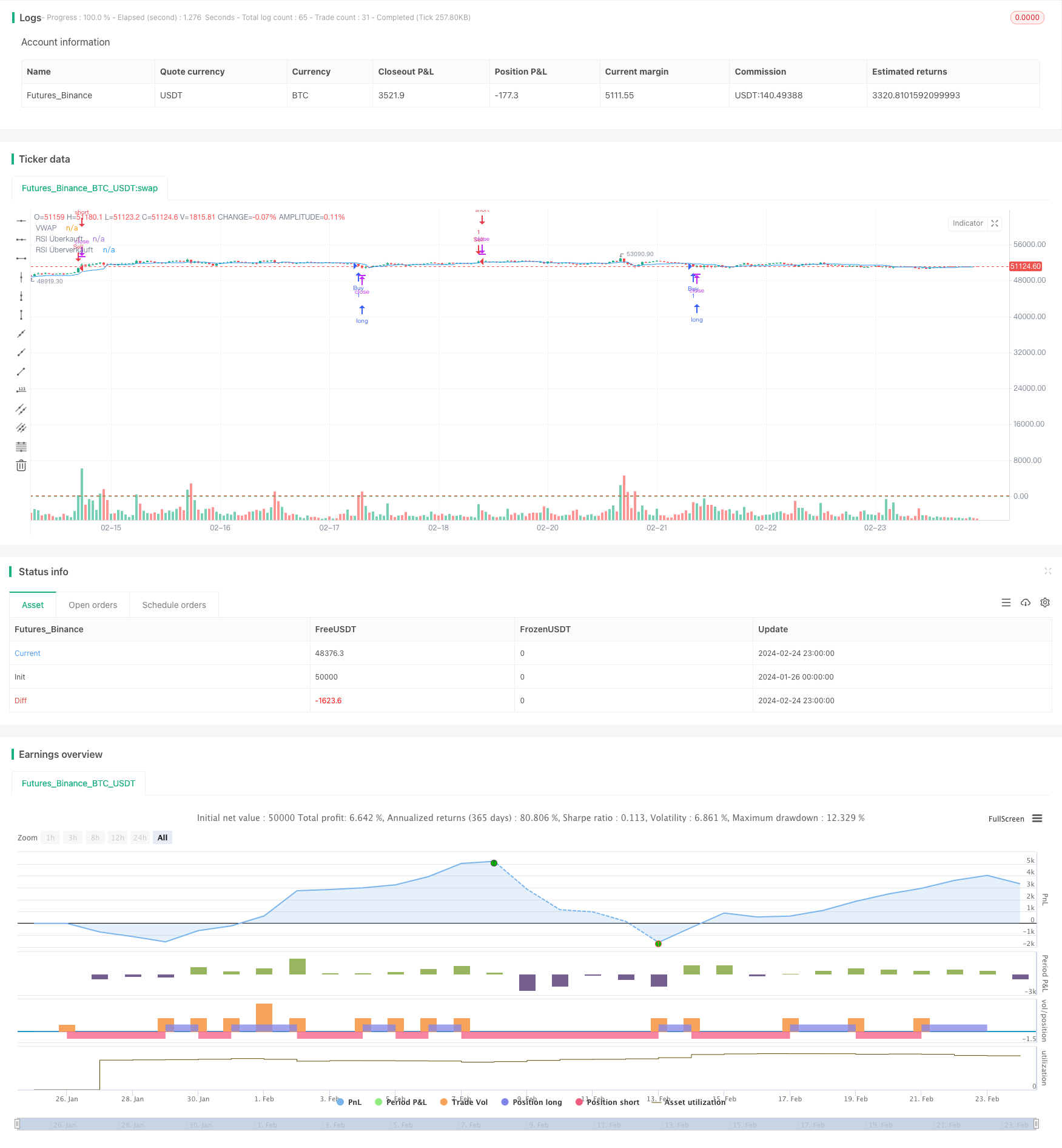
概述
该策略利用移动平均线作为主要技术指标,结合RSI指标作为过滤条件,实现了一个较为简单的趋势跟踪策略。当价格跌破或突破指定周期的移动平均线时产生交易信号。同时,RSI指标可用来判断过度买入或卖出的情况从而避免错误交易。整体来说,该策略适用于追踪中长线趋势,在强势趋势中可以获得较好收益。
策略原理
本策略主要基于移动平均线和RSI指标。移动平均线被广泛使用来判断价格趋势方向和强度。当价格高于移动平均线时,表示当前处于上升趋势;当价格低于移动平均线时,表示当前处于下降趋势。因此,价格突破移动平均线可以作为产生交易信号的依据。另一方面,RSI指标则可用于判断市场是否处于超买或超卖状态。RSI高于70表示可能超买,低于30表示可能超卖。所以,本策略采用RSI指标对移动平均线产生的交易信号进行过滤,只有在RSI指标显示没有超买超卖的情况下,才会产生真正的交易指令。
具体来说,当价格低于移动平均线且RSI低于30时产生买入信号;当价格高于移动平均线且RSI高于70时产生卖出信号。根据这些交易信号来建立多头或空头仓位。
优势分析
该策略具有以下优势:
操作简单,容易实现。主要依赖移动平均线指标,对交易者技术要求不高。
能够有效跟踪价格趋势,特别适合中长线操作。
RSI指标的应用可以避免不必要的错误交易,过滤假信号。
无需频繁调整参数,降低了过度优化的风险。
可扩展性高,可引入更多指标或优化规则来完善。
风险分析
该策略也存在以下风险:
在价格震荡区间内,会产生较多错误信号导致亏损。
无法很好判断趋势反转点,可能在市场转势点前后建立错误仓位导致损失。
参数设置(如移动平均线周期长度)不当可能影响策略表现。
无法适应突发事件造成的剧烈行情。
回测数据拟合风险,实盘表现可能与回测结果有差异。
优化方向
该策略可以从以下几个方面进行优化:
增加止损机制。可以设置移动止损或厚度止损来控制单笔亏损风险。
增加趋势判断指标。例如MACD,KD等可以帮助判断趋势方向,避免产生错误信号。
优化移动平均线参数。可以测试不同周期参数对策略稳定性和收益率的影响。
增加交易频率控制。例如只在特定时段或只有较大价格变动时进行交易。
引入机器学习技术进行策略优化和训练。
总结
本策略整体而言是一个较为简单实用的趋势跟踪策略。它利用移动平均线判断价格趋势和方向,同时用RSI指标来过滤掉错误信号。策略优点主要有操作简单,容易实现,适合中长线交易等。缺点在于无法很好处理价格震荡和趋势反转。未来优化空间在于增加止损机制,引入更多辅助指标判断趋势,以及参数优化等。
/*backtest
start: 2024-01-26 00:00:00
end: 2024-02-25 00:00:00
period: 1h
basePeriod: 15m
exchanges: [{"eid":"Futures_Binance","currency":"BTC_USDT"}]
*/
//@version=5
strategy("Verbesserte VWAP Strategie mit RSI Filter", overlay=true)
// Eingabeparameter
length = input(5, title="VWAP Länge")
multiplier = input(3.0, title="Standardabweichungs-Multiplikator")
smaLength = input(25, title="SMA Länge für Trendfilter")
rsiPeriod = input(8, title="RSI Periode")
rsiOverbought = input(70, title="RSI Überkauft-Schwelle")
rsiOversold = input(30, title="RSI Überverkauft-Schwelle")
// VWAP, Standardabweichung und RSI
vwapValue = ta.vwap(hlc3, length)
rsi = ta.rsi(close, rsiPeriod)
// Signale mit RSI Filter
buySignal = close < vwapValue and rsi < rsiOversold
sellSignal = close > vwapValue and rsi > rsiOverbought
// Strategie-Logik
if (buySignal)
strategy.entry("Buy", strategy.long)
if (sellSignal)
strategy.entry("Sell", strategy.short)
// Zeichnen
plot(vwapValue, color=color.blue, title="VWAP")
hline(rsiOverbought, "RSI Überkauft", color=color.red)
hline(rsiOversold, "RSI Überverkauft", color=color.green)